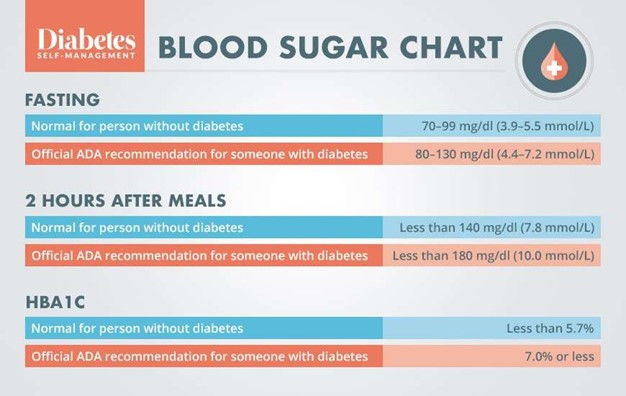A nurse is caring for a client who is at 6 weeks of gestation.
Which of the following laboratory findings should the nurse report to the provider?
WBC 7,000/mm³.
Hemoglobin 13 g/dL.
Blood glucose 130 mg/dL.
RBC 5.8 million/mm³.
The Correct Answer is C
Blood glucose 130 mg/dL.
This is because the normal range of blood glucose for pregnant women is 70 - 110 mg/dL .

A blood glucose level of 130 mg/dL indicates gestational diabetes, which can have adverse effects on the mother and the fetus.
The nurse should report this finding to the provider and initiate interventions such as dietary counseling, glucose monitoring, and insulin therapy if needed.
Choice A is wrong because WBC 7,000/mm³ is within the normal range for pregnant women, which is 4,500 to 10,000 cells/mcL .
A low WBC count would indicate an increased risk of infection, while a high WBC count would indicate inflammation or infection.
Choice B is wrong because hemoglobin 13 g/dL is within the normal range for pregnant women, which is 11 to 14 g/dL .
A low hemoglobin level would indicate anemia, while a high hemoglobin level would indicate dehydration or polycythemia.
Choice D is wrong because RBC 5.8 million/mm³ is within the normal range for pregnant women, which is 4.2 to 5.9 million/mm³ .
A low RBC count would indicate anemia or hemorrhage, while a high RBC count would indicate dehydration or polycythemia.
Nursing Test Bank
Naxlex Comprehensive Predictor Exams
Related Questions
Correct Answer is B
Explanation
It occurs because nicotine stimulates the release of dopamine, a neurotransmitter that regulates mood and pleasure. When nicotine intake is stopped, dopamine levels drop and cause anxiety and irritability.
Choice A is wrong because tachycardia, or rapid heart rate, is not a symptom of nicotine withdrawal. In fact, smoking can increase blood pressure and heart rate, so quitting smoking may lower them.
Choice C is wrong because weight loss is not a symptom of nicotine withdrawal. On the contrary, weight gain is more likely to occur after quitting smoking, because nicotine suppresses appetite and increases metabolism.
Choice D is wrong because vomiting is not a symptom of nicotine withdrawal. Vomiting may be a side effect of some nicotine replacement therapies, such as patches or gum, but it is not caused by the lack of nicotine itself.
Correct Answer is A
Explanation
“I will turn all pot handles toward the back of the stove.” This indicates that the guardian understands how to prevent the toddler from pulling a pot off the stove and getting burned.
Choice B is wrong because a child’s car seat should be rear-facing until the child is at least 2 years old or reaches the maximum height and weight for the seat.
Choice C is wrong because the temperature of the water heater should be set to no higher than 120 degrees to prevent scalding injuries.
Choice D is wrong because drop-side cribs are banned in the United States due to the risk of entrapment and suffocation.
Whether you are a student looking to ace your exams or a practicing nurse seeking to enhance your expertise , our nursing education contents will empower you with the confidence and competence to make a difference in the lives of patients and become a respected leader in the healthcare field.
Visit Naxlex, invest in your future and unlock endless possibilities with our unparalleled nursing education contents today
Report Wrong Answer on the Current Question
Do you disagree with the answer? If yes, what is your expected answer? Explain.
Kindly be descriptive with the issue you are facing.
